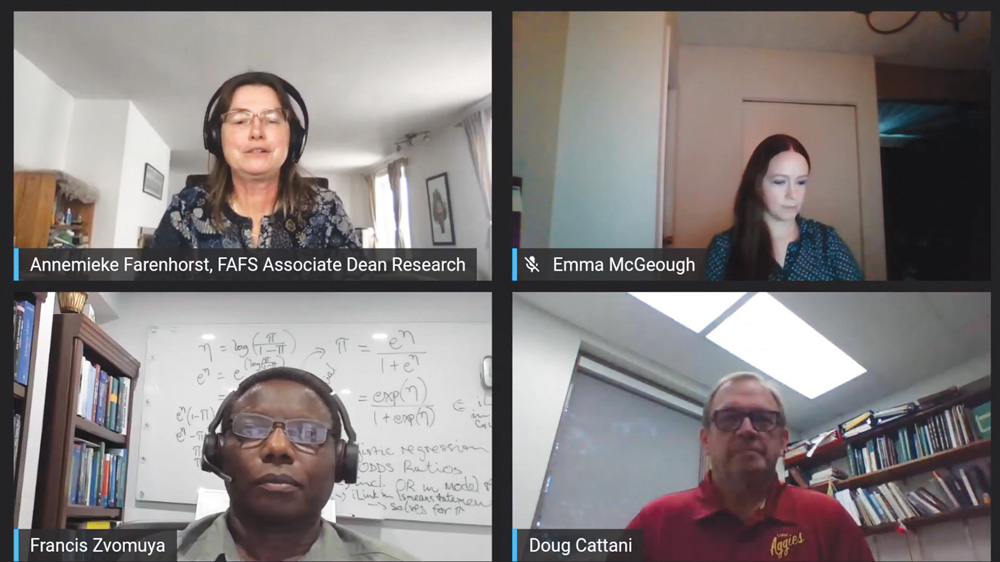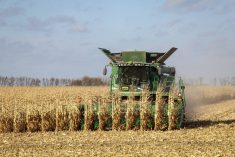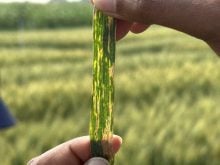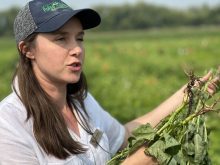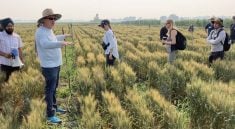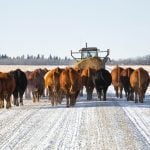A new study is looking at intermediate wheatgrass’s potential to be both cash crop and quality forage in the same year.
Intermediate wheatgrass is a perennial grain sometimes known by the trade name ‘Kernza.’ It has historically been used as forage in North America, but in its recent years has been pegged as the most likely candidate for a viable, perennial grain crop.
Yield is the hang-up. Researchers have doubled grain yield, but the plants produce on average of just under 15 bushels per acre in Manitoba.
Read Also

Still hard to predict precise fertilizer payback
Despite decades of advances, international research finds no clear answer for where and when adding nutrient will fail to boost growth.
A study from the University of Manitoba will look at the possibility of first harvesting a grain crop from intermediate wheatgrass, then grazing cattle on the regrowth in late fall and winter.
The research team includes Emma McGeough from the animal science department; Doug Cattani, who received provincial recognition in 2019 for work with perennial grains; soil science professor, Francis Zvomuya, and others.
Bill Biligetu of the University of Saskatchewan is also on the team, along with researchers from Agriculture and Agri-Food Canada, Ducks Unlimited Canada and the Land Institute in Kansas.
Researchers planted trial sites at the university’s Glenlea and Carman research stations in 2019, but drought hampered efforts to establish the crop, Cattani told the Co-operator. They had to re-establish the large grazing site at Glenlea this year.
“This species has a juvenile year and the question we are asking is, can we get a grain crop and a fall stockpile forage grazing in the same year?” said Cattani. “Therefore, we will be harvesting a grain crop in 2021 and begin grazing in mid-October 2021, and harvest a second grain crop in 2022.”
In an Oct. 21 webinar, McGeough, Cattani and Zvomuya explained the study’s objectives.
They will assess the economic potential for intermediate wheatgrass-based pastures to provide a cash crop and high-quality feed in the same growing season. This will include analyzing the cost of production and average returns. They’ll also look at the economic impact of forage rotation and nutrient stocks under that system.
Researchers will look at the agronomic performance of intermediate wheatgrass alone and in combination with a non-competitive, nitrogen-fixing legume.
At the Glenlea site, researchers will assess the performance and grazing behaviour of cattle on the wheatgrass-based pasture in late fall and early winter. This will include measuring the forage yield, daily feed intake, and the cattle’s methane emissions, said McGeough.
They will look at how the wheatgrass does as a habitat for songbirds and waterfowl, and assess the intermediate wheatgrass and cattle system for its environmental footprint. Researchers will look at the impact of the system on soil health and greenhouse gases, and model soil functions under that system.
Perennial crops have many potential benefits, said Cattani. Besides reduced need for tillage and seeding, the perennial wheatgrass can interrupt weed cycles, and allow grazing at different times of year which can spread manure over the area.
They hope it will show benefits in soil health and sustainability, he said.


